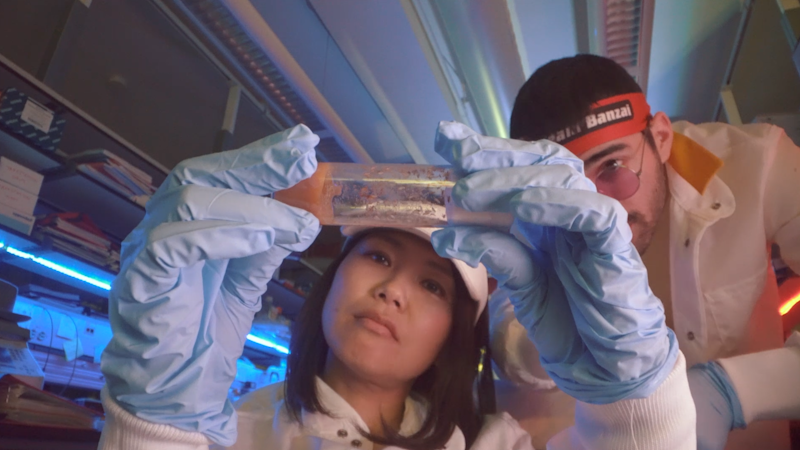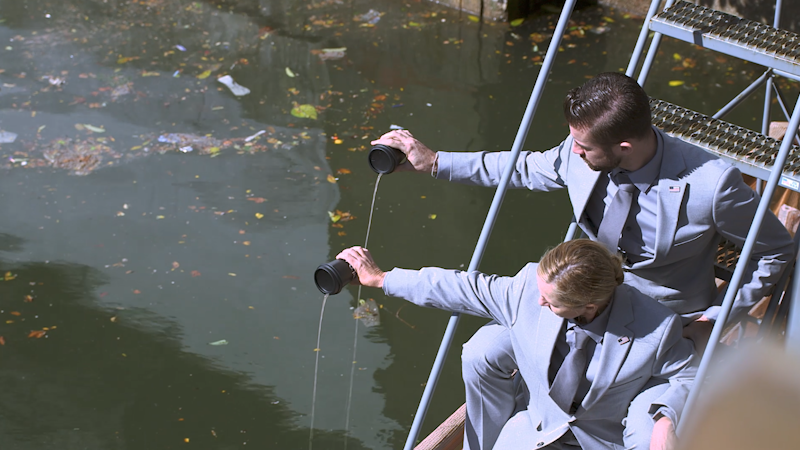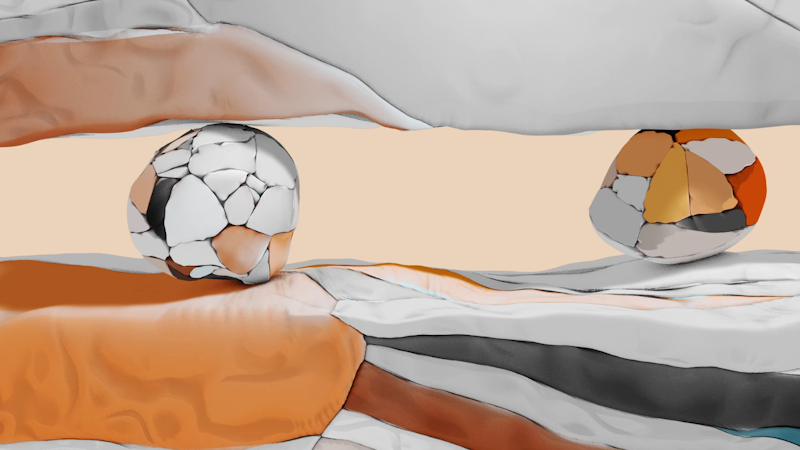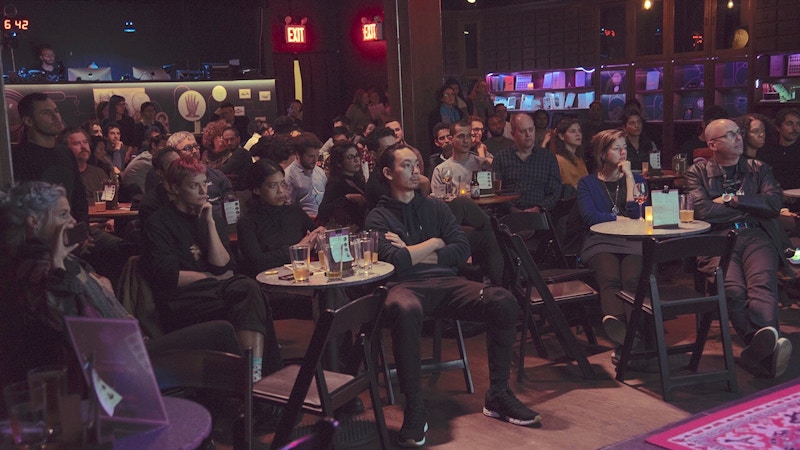
One Artist. One Scientist. One Week to Make a Film.
From the film Confabulations, from filmmakers Haoyan of America, which depicts a world in which memory is artificial. Photo courtesy of Imagine Science Films.
Tracy Fanara, an environmental health scientist, entered the Imagine Science Symbiosis Competition expecting to encounter every stereotype of a scientist. Instead, she found herself among fellow researchers who were also defying clichés about academics. “I didn’t expect all the other scientists to be so outgoing,” she says, admitting she also harbors scientist stereotypes even while trying to break them. “I didn’t expect every single one of the scientists to be so personable and so good at public speaking and presenting.”
No doubt that sociable nature and eagerness to share played a vital role in an unusual collaborative effort. As one of six scientists selected to participate in the Symbiosis competition, Fanara, the program director of the Mote Marine Laboratory & Aquarium in Sarasota, Florida, received a master class in experimental filmmaking. She worked alongside live-action filmmaker, animator and director Leah Shore to create a piece centered around this year’s theme: survival. The competition pairs scientists with filmmakers and gives them the tools to produce an original short film in just a week’s time. It’s a laboratory for experimentation in approaches to science engagement and a catalyst for the merging of two seemingly disparate communities that rarely have the opportunity to collaborate. The competition is just one program of the annual, weeklong Imagine Science Film Festival held in New York City.
“What I love so much about the competition is that it works on multiple levels to break down barriers between scientists and artists,” says Lauren Kaye, the managing director of Imagine Science. Not only do the week’s events and one-on-one interactions foster professional connections, they also present a chance for all participants to demonstrate that, despite their different areas of expertise, they derive inspiration from similar sources — whether they be spiritual, emotional, personal or intellectual.
“Working with an artist really gives you a different perspective on how to visualize a message,” says Fanara of her experience with Shore. “What I’ve always done is very mainstream, making things so the general public can understand and making it very straightforward so there’s no room for interpretation.”
“Extremophiles,” Fanara and Shore’s film, was named the winner during the closing night of the festival, on October 19. Titled after the term for organisms that can survive in extreme environments, the film highlights five of the most polluted sites in Brooklyn. Featuring two dancers and accompanying subtitles to propel the narrative, “Extremophiles” explores themes like greed and ignorance while alluding to impending doom and catastrophe. In one scene shot at Radiac Research Corp., a radioactive-waste storage facility, the dancers are sporting hazmat suits and gas masks while weaving their bodies in and around school desks, in a nod to the multiple schools located near the waste center.
For a segment shot at the Gowanus Canal — well known for harboring harmful microbes that can cause nausea, vomiting and even death — the dancers translated hypothetical results of ingesting canal water into their choreography.
“They were acting out the human impacts of these environmental contaminants,” says Fanara.
Although Fanara has experience as a TV personality — most recently, as a contestant to host the next “Mythbusters” series — she says the filmmaking and competition process opened her mind “to other ways to do outreach and public speaking.” In April 2019, she’ll be holding her first rap concert, where she’ll be performing her song “Polar Ice Ice Baby.” Inspired by Shore’s use of dancers in their joint film, she now hopes to share the stage with a group of preteen backup dancers, something that would have never occurred to her prior to the competition.
For Sheela Prasad, a Ph.D. candidate in molecular pharmacology at New York University, her role in the creation of her team’s film lacked much of the face-to-face interaction that Fanara enjoyed. Prasad first presented her research to award-winning animator Réka Bucsi and then donned the hats of consultant and fact-checker. “I don’t know how to draw, and I don’t know how to animate,” says Prasad. It was Bucsi who “brought our discussions to life.”
Bucsi was also out of her comfort zone. “Science is something I have no idea about,” she said during her “halfway point” showcase at Bowery Poetry Club following the festival’s opening night. During the showcase, all six teams introduced themselves to the crowd and provided an inside look at the process of making their respective films.
Prasad’s research drove the film’s narrative, which Bucsi and her assistant drew frame by frame. “We started off talking about the theme of the festival, which was survival. I study cancer cell survival and mechanisms that cancer cells use to increase their survival and proliferate in the body,” says Prasad. “I always find parallels in the micro world — how cancer cells interact with our bodies and how humans interact with the environment.” Her prior work in a parasite lab provided additional terrain to mine for metaphors.
What she likes about Bucsi, she explains, “is that she doesn’t have scientific training, but I feel like we were on the same wavelength when thinking about these abstract concepts.”
“She would find ways to incorporate [my research] into the story,” Prasad adds. Throughout the week, the pair maintained a steady dialogue, with Prasad sending real-life imagery and Bucsi responding with animations of her own so that Prasad could verify their scientific accuracy. “Of course, it’s a film, it’s animation, so there’s a lot of room for interpretation,” says Prasad.
Throughout the Symbiosis Competition and the film festival as a whole, one message proved nearly universal: Artists and scientists aren’t as different as we might believe. And given the chance to unite, the two groups can produce works of boundless creativity.






